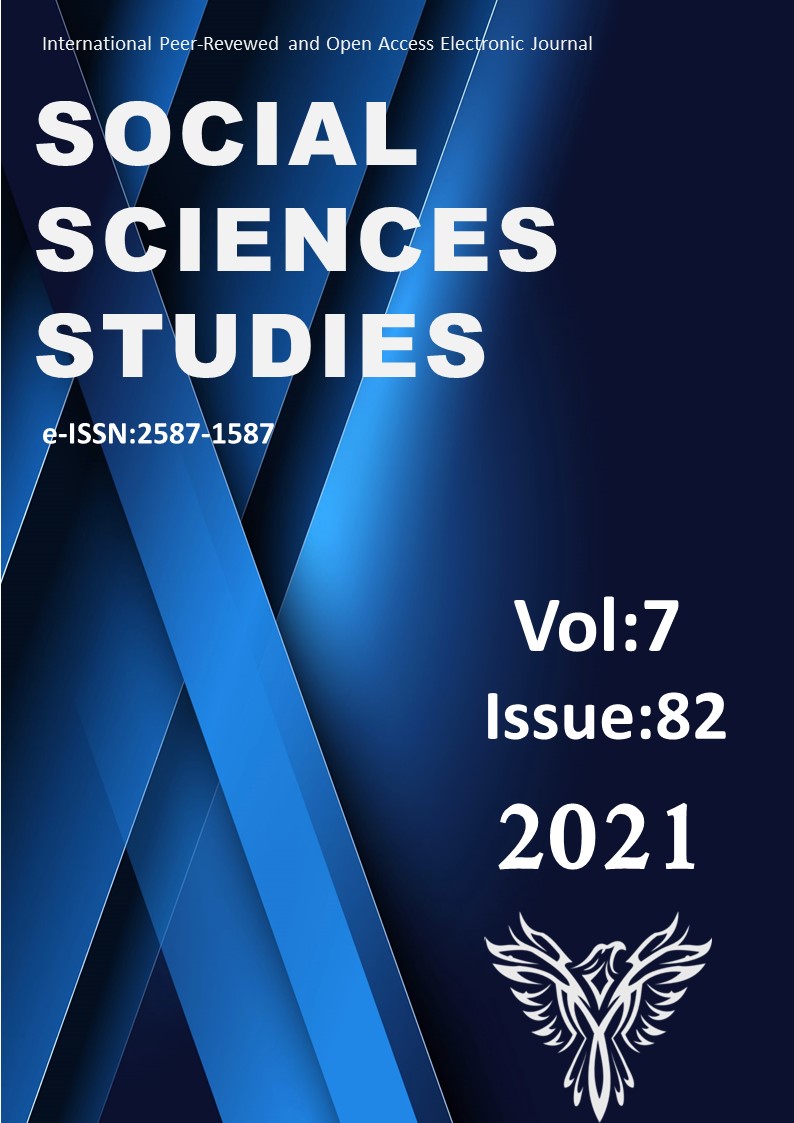Author :
Abstract
ÖZET Arapgir tarihte yetiştirdiği paşaları, Köhnü üzümü, doğal yapısıyla dikkat çeken yöredir. Günümüzde kaza statüsünde ise de Osmanlı Devleti’nin sancak şehirleri arasındadır. Sınırları Erzincan, Elazığ, Sivas şehirlerinin topraklarının belli ölçüde kapsamaktaydı. İslam ve gayrimüslim nüfusun dokuma sahasında imalat yaptığı, XIX. Yüzyılda ki atılımıyla civardaki kazalar ile birlikte manusa kumaşlarıyla öne çıkmaktaydı. Elli yıl öncesinde ise azalmış olsa da manusa dokumasıyla adı bilinen yerler arasındaydı. Arapgir ve manusa dokuması, tarihî süreç çerçevesinde incelenmeye çalışıldı. Kumaşların teknik kısmına girilmeden Arapgir, dokuma ve manusanın gelişimiyle ortaya çıkan durum araştırıldı. Manusanın çöküşü ve sonrası faaliyetlere de yer verildi. Arapgir’de Sanayi İnkılabı’nın getirdiği makineleşmede daha öncesinde var olan dokumacılığını canlandırarak, mevcut tezgâhlarını artırarak “manusa” ismiyle bilinen dokuma alanına yönelmiştir.1830’ lu yıllardaki manusa serüveni kısa sürede kaza sınırlarının dışında kalmayarak Osmanlı Devleti’nin de hudutlarını aşmıştır. XIX. yüzyılda Arapgir’in iktisadi cihetinin şahlanışıdır. İngiliz kumaşlarıyla boy ölçüşecek seviyede olup, bu zanaatın gereğini yerine getirerek, nimetlerinden de yararlanmasını bilmiştir. Arapgir’e giren kervanların bir ucu çarşıdaysa gerisi üç yüz metre ötede Havut Gediği civarında olduğunu satılan manusa kumaşlarıyla hak vermek gerekir. Arapgir ‘in ticari ehemmiyetini kaybetmesinin çeşitli nedenleri ileri sürülebilirse de bunlardan biri de manusanın makine dokumaları karşısında tutunmayışına bağlamak fikridir. I. Cihan Harbi’nin olumsuz yansımalarını da göz ardı etmemek gerekir. 1943 den itibaren manusayı canlandırma macerası ilk birkaç yıl olumlu görülmüşse de kısa ömürlü olmuş, devamı küçük ölçekte sürmüştür. Dokumanın önemini yitirmesi manusayı ve Arapgir’i olumsuz etkiledi. Cumhuriyetle beraber demiryoluna uzak kalışı, şehirlerarası güzergâhının olmayışı, kapalı bir ilçeye doğru sürüklenmiş, Osmanlı Sancak dönemindeki vasfını yitirerek göç vererek azalan kaza haline dönüşmüştür.
Keywords
Abstract
Arapgir is a region that draws attention with its pashas, Köhnü grape, and its natural structure. Even though it has the status of a district today, it is among the starboard cities of the Ottoman Empire. Its borders covered the lands of the cities of Erzincan, Elazığ and Sivas to a certain extent. With the breakthrough in the 19th century, when the Islamic and non-Muslim population made manufacturing in the field of weaving, Arapgir stood out with its manusa fabrics together with the surrounding districts. Fifty years ago, although it had decreased, it was among the places known for its manusa weaving. In this study, the weaving of Arapgir and manusa was tried to be examined within the framework of the historical process. Without entering the technical part of the fabrics, the situation that emerged with the development of Arapgir, weaving and manusa was investigated. The collapse of Manusa and activities afterwards were also included. In the mechanization brought by the Industrial Revolution in Arapgir, it revived the weaving that existed before and increased its existing looms and turned towards the weaving field known as "manusa". The adventure of manusa in the 1830s did not stay outside the district boundaries in a short time and surpassed the borders of the Ottoman Empire. It is the rise of the economic aspect of Arapgir in the 19th century. He was at a level to compete with British fabrics, and he was able to make use of the blessings of this craft by fulfilling the requirements of this craft. Although various reasons can be put forward about the loss of commercial importance of Arapgir, it can be said that the most important of these reasons manusa could not compete against machine weaving. One should not ignore the negative reflections of the First World War. Although the adventure of reviving the manusa was seen positive for the first few years since 1943, it was short-lived, the continuation continued on a small scale. Weaving lost its importance negatively affected manusa and Arapgir. With the Republic, its distant from the railroad, the lack of an intercity route, it drifted towards a closed area, it lost its qualification in the Ottoman Sancak period and turned into an town that decreased by emigration.





